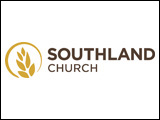Informa Economics expects reduced feed costs to help improve profitability within the hog sector.
Herd liquidation throughout North American and around the world combined with lower feed costs and continued stable demand for pork have improved profitability within the North American hog industry.
Informa Economics vice-president Dave Reimann says the key driver for most feed values is U.S. corn and we saw strength in corn from late last summer to the end of 2009 driven by strong ethanol demand and issues with delayed harvest which supported the value of Canadian feed wheat and barley.
As we got into the dead of winter here, essentially what happened was that USDA numbers started to confirm that the crop was actually bigger than previous expectations, South American crop prospects were starting to look pretty darn good and we just saw this thing tip over.
At the exact same time crude oil took a bit of a rest, that dropped ethanol values to some degree and so we saw that whole market cool off.
So corn has dropped.
We still aren’t seeing massive amounts of corn coming up into Canada but still influe8unces where the barley will go.
Another thing that comes in is the DDG values and they tend to trade basically as a percentage of corn so as corn has fallen we’ve seen pressure on DDG values and we are still seeing quite a bit of DDGs moving into western Canada and particularly into hog rations.
It has managed to put some pressure on feed values and really has been driving for instance the value of feed barley in western Canada and many of the other products as well, even durum.
We’re seeing some pretty good quality durum end up in the feed markets here in western Canada but all again kind of governed by the value of DDGs.
Reimann notes we have abundant supplies of wheat and barley around the world as well as other feed ingredients and, with the increasing availability of DDGs, a major spike in feed grain values is unlikely.
Source: Farmscape.Ca



